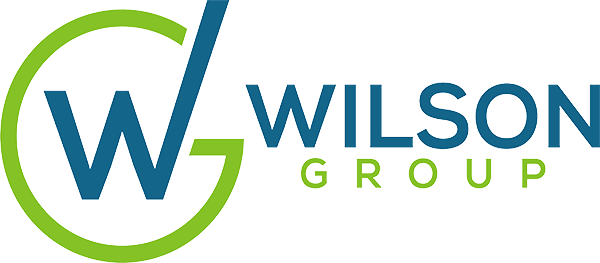Many sales organizations start out with hybrid sales roles, having one role responsible for new business, expanding business in current accounts and renewals, and maintenance of current accounts. Hybrid roles have different commission rates; higher rates for growing new revenue within existing accounts or acquiring new logos as compared to maintaining the account and its revenue. Hybrid roles have at least a 50% base and 50% incentive mix or sometimes as much as 30% base and 70% incentive mix depending on the sales strategy.
At some point, continued sales growth and market complexities requires two distinct roles to drive revenue: the Hunter and the Farmer (Account Manager). Hunters are focused on acquiring new business and opening doors for the organization. Farmers are the cultivators, responsible for retaining accounts, nurturing client relationships, growing existing revenue streams, and ensuring long-term satisfaction. In this case, the Account Managers commission is based on renewals or ongoing sales and revenue growth. Their incentive mix is typically 80% base and 20% incentive with limited commission accelerators as compared to hunters which can move to 40% base and 60% incentive with significant acceleration for over achievement, or high leverage commission plans.
The Art of the Sales Handoff: Hunters, Farmers, and Why Timing is Everything
For organizations that have separate hunters and farmers, a crucial moment in the sales process is the “handoff”—the transition of an account from the Hunter who landed it to the Farmer who will manage its ongoing success. The timing of this handoff is not arbitrary; it is a strategic decision influenced by several factors:
When to Make the Handoff
- Sales Cycle Length: The nature and duration of your product’s sales cycle play a significant role. Longer, more complex sales often require the Hunter to stay involved for a longer period because they have the product knowledge and the expected higher persuasion skills.
- Client Relationship Dynamics: Who is the primary contact within the client organization? Is it the top decision-maker, or has the day-to-day management shifted to an administrator or program manager?
- Hunter’s Future Involvement: Should the Hunter maintain any direct contact with the client post-sale, or is their job truly done once the ink is dry?
- Typical First Sale: If most customers make a smaller revenue commitment first and there is opportunity for growth with other products or expanded volume, then the hunter and farmer may share the account for 12 to 24 months, with the hunter getting paid the higher commission rate, where sales expansion is considered the same value as a new account.
Navigating Large Accounts and Strategic Partnerships
In strategic accounts or major partnerships, the sales dynamic often involves a team. Here, the Hunter’s involvement is typically limited to securing the initial deal or returning only for significant upgrades or expansions of products/services.
The Account Manager takes the lead on all daily activities, handles contract renewals, and proactively seeks new opportunities within the account. When these new opportunities arise, a key decision needs to be made: who takes the lead and who will get the commission – the Account Manager or the Hunter?
This decision often boils down to a fundamental principle: an individual can typically only effectively span two levels within an organization’s hierarchy. The hunter will typically build relationships with senior executives and key decision-makers while the account manager is one level below or a client administrator. If that Hunter then drops down to work with a client’s administrator or program manager for daily tasks, they risk losing contact and credibility with the senior executive who signed the initial contract.
Therefore, when the management of the account or service is transferred to someone lower in the client organization for ongoing operations, this is the signal for a handoff. This transition might occur 3 to 6 months after the contract is signed. During this initial period, the Hunter is compensated based on the contract’s value or the effort invested. The Account Manager then takes over, with their compensation tied to renewals or additional sales (upsells) within the account.
When the Decision Maker is also the Administrator
However, some business models differ. If the decision-maker at the client company also acts as the day-to-day administrator, the handoff timing depends on how quickly the Account Manager can establish a strong relationship with that decision-maker.
In these scenarios, both the Hunter and the Account Manager are perceived by the client as operating at the same level. The Hunter’s role is to identify and secure the initial opportunity, but the true company-customer relationship is forged and deepened by the Account Manager.
Here, the Hunter is compensated based on the initial contract value once invoiced (or for a defined period to acknowledge their sales effort). Subsequently, all revenues, renewals, and upsells are credited and paid to the Account Manager.
The Distinct Roles of Hunters and Farmers
The Account Manager’s role is about retaining, renewing, servicing, and upselling within their existing accounts. This involves addressing client problems, providing ongoing education, supporting product applications, and capitalizing on the client’s growth to expand the use of your product or service. Meanwhile, the Hunter is focused on ensuring a continuous pipeline of new business for the organization.
These distinct roles naturally require different sales compensation plans and total compensation opportunities. When the handoff process between them is consistent and effective, it not only strengthens the sales process and client relationships, but also ensures Hunters and Account Managers feel fairly compensated for their vital contributions.
Partnering with Wilson Group for Sales Incentive Design
At Wilson Group, we understand that well-designed sales incentives are crucial for driving performance and retaining top talent. We look forward to partnering with you to address your unique sales incentive design needs. Our typical scope of work includes:
- Current Plan Assessment: Evaluating the effectiveness of your existing plan designs in relation to your business strategy and specific sales roles.
- Incentive Plan Design: Crafting tailored incentive plans for each of your unique sales roles, including payout opportunities tied to performance, key measures, incentive mechanisms (commission/bonus), and a clear impact analysis of proposed changes.
- Implementation & Automation Support: Developing finalized, easy-to-use Excel models to help your company communicate, implement, and administer the new plans. Alternatively, we can refer you to a Sales Performance Management (SPM) solution to automate and enhance accuracy for documentation, communication, and payment to your sales force.


